#prototype technology
Explore tagged Tumblr posts
Text

An 80s era Apple portable/laptop computer prototype.
#apple#apple computer#apple prototypes#computers#the 80s#the 1980s#80s aesthetic#vintage computers#vintage tech#vintage technology#electronics#vintage electronics#industrial design#product design#apple products
2K notes
·
View notes
Text
Please signal boost: One-of-a-kind Broken Prototype S3 Chrome 460 Mega-infopost


(Yes, I know that is a very word salad-y post title.)
This is the S3 Chrome 460. It is currently nonworking. Nobody knows anything about it, and I’m trying to get in contact with any former S3 Graphics engineers that may be able to help.
What is known:
All “@” handles are in reference to users on Twitter.
As a whole, the Chrome 400 series utilized the Destination architecture, which was S3’s very first unified shader architecture capable of GPGPU tasks, much like Nvidia’s CUDA.
The Chrome 450/460 series utilized the mid-range “Destination 2” (D2) architecture, as opposed to “Destination 3” used by the low-end 430/440. As said by Loeschzwerg, there were no known high-end “Destination 1” architecture chip taped out. (https://twitter.com/Loeschzwerg_3DC/status/1683162950951903235)
The Chrome 450/460 was a 13x13mm (169mm2) die produced on the 90nm node by Fujitsu, and later TSMC. Strangely, the 430/440 series was produced on the much smaller 65nm node.
The Chrome 450/460 supported DX10, whereas the 430/440 supported DX10.1
The PCI device IDs for the Chrome 450/460 series are as follows:
o 9020, 9022, 9023, 9024, 9025 (http://listing.driveragent.com/c/pci/5333)
o The vendor ID for all chips is 5333 (S3 Graphics)
o There is one known beta driver that supports these device IDs (https://www.touslesdrivers.com/index.php?v_page=23&v_code=21175)
These PCI IDs appear to correspond to different die revisions
o Known existing die revisions present in collection: 86C920-921 (ID 9020), 86C922 (ID 9022 based on the cards owned by @Loeschzwerg_3DC), and 86C924 (can be assumed to be device ID 9024)
There are two “major” die revisions that exist.
o Revision 86C920-921 (I will refer to this as the “’920” revision) is most certainly the earliest revision, being physically larger in package size than all other revisions.
It also has a different pinout, and is produced by Fujitsu rather than TSMC, resulting in a greyish tint on the die rather than the blue tint of later revision chips.
The date code on all 86C920 chips (in my collection) reads “0727”, which implies that every ‘920 chip in existence was produced in a single batch on the 27th week of 2007, but cannot concretely prove so.
o Revision 86C922 (‘922) changes fabs from Fujitsu to TSMC, leaving the dies with a blueish tint and changing the pinout. This revision serves as the basis for all following revisions known to exist.
The date code on all 86C922 chips across my collection and Loeschzwerg’s appears to be 0738, implying that this revision was also produced in a single run much like its predecessor. (https://twitter.com/Loeschzwerg_3DC/status/1616750453500547072)
The 86C924 (‘924) revision is minor in comparison to the jump from ‘920 to ‘922, but interestingly the two in my collection have mismatching date codes—0728 and 0734. Unless I am reading the date codes wrong, this means that the ‘924 revision was produced either in two separate batches before the ‘922 run was done, or that perhaps it was continuously produced between the ‘920 and ‘922 revisions. I do not know what changes were made between ‘922 and ‘924.
o Almost all dies have a number and a letter, a word, or both written on them in permanent marker, likely for IDing which ones were being tested for what. The two words that appear the most often are “mem” (by far the most common) and “shift”. The letter “p” (pass?) also regularly appears.
There are three known Chrome 460 ES cards that exist: my broken early-revision ‘920 card, and Loeschzwerg’s two later-revision cards, one of which appears to be a 460 binned down to a 450.
There were rumors that the reason why the card was scrapped seemingly just before release was because its die became too expensive to produce (https://forum.beyond3d.com/threads/s3-excalibur-with-128-bit-mc-taped-out.42965/). There is zero confirmation or denial of this, and this rumor was said in passing on a thread discussing the follow-up Chrome 500 series (Excalibur architecture, which was later revealed to be a mildly tweaked at best Destination architecture).
The Chrome 460 (or at least, its ‘920 revision) gets hot very quickly, and may have been the reason for the switch to TSMC’s fabs.
o I believe that my card, despite having a heatsink and a fan blowing directly at it, likely died from overheating in the few minutes that it was running while I was collecting information and attempting to install an INF-modded 430/440 driver. It worked again after replacing the popped MOSFET and putting on the proper stock heatsink that it would’ve had mounted, but quickly died to a short a second time even with the new cooler. I still feel bad about this.
Most if not all Chrome 460 chips were acquired either directly through the S3/VIA/Centaur lab auction or through someone who attended the auction. The chips and card I own came from John at CPUShack, for example, and a number of others purchased miscellaneous 460s for their private collections from him.
o Loeschzwerg got his cards from a reseller who attended the 2021 Centaur auction just like I had.
And now, returning to my own broken card, to reiterate:
The card died to a short, and triggers the power supply’s OCP mode when the chip is installed on the board according to @dosdude1 . This does not happen when the chip is removed.
VCORE and GND were found by dosdude1 on the card’s footprint of the Chrome 460, and using that knowledge, the resistance from VCORE to GND on the chip itself was found:
o The original chip that was soldered to the card itself measured 1.5 ohms from VCORE to GND
o All other ‘920 chips between the ones in my collection and sent to dosdude1 as candidates for chip-swapping measure between 0.5 and 0.9 ohms, which I was told should be normal for graphics chips, but according to dosdude1 is still plenty low enough to trip the PSU’s OCP mode when installed.
Timeline
I originally purchased the card, alongside two “spare” ‘920 chips, two ‘922 chips, and two ‘924 chips, from CPUShack. The card had no heatsink included, so I had to make do with a chipset cooler (that honestly might have actually been better at cooling than the stock cooler) and a case fan.
o A few weeks after the purchase and arrival of the card, which by then had blown out its MOSFET and died short, I was able to buy a couple S3 Chrome 400-series coolers from CPUShack after he found them. Installing the cooler and replacing the MOSFET with an identical one salvaged off a Chrome 430 managed to get the card to work again for about half a minute from what I remember. However, I will also mention that the salvaged MOSFET came off a Chrome 430 that also died short. The MOSFET itself was undamaged, but the die itself appeared to be busted. I guess it was just an S3 thing during this generation.
o From what I remember, I filled out repair forms for both Louis Rossman and NorthRidgeFix, in hopes that a chip swap with one of the extra ‘920 dies I’d acquired at the time could bring the card back to life. In both cases I was turned down, though this was to be expected since there is zero documentation available for either the card or the chip itself.
o I was then able to get in contact with dosdude1, asking the same thing—just a chip swap was what I was hoping needed to be done. After some back and forth, I sent off the card, both of the extra ‘920 chips I had at the time, and some additional VRM MOSFETs that I’d bought after I’d run out of salvage chips.
o Shortly after the card and chips were mailed out, I came back to CPUShack asking if he had anymore Chrome 460 dies in stock. I proceeded to purchase all remaining chips he could find, which consisted of 10 ‘920 and 10 ‘922 revision dies.
o The chip swap would be completed with minimal issue, but the card unfortunately remained dead. It’s at this point where dosdude1 decided to probe for VCORE and GND, and in turn I measured out the resistance between the two on all ten of the ‘920 chips that had arrived by then, finding that they all read between 0.5 and 0.9 ohms. I do not know what the resistance from VCORE to GND is on the later die revisions, as the pinout was changed.
o Currently, dosdude1 is waiting for a buck regulator replacement to arrive after replacing the MOSFETs themselves yet again, finding in the process that the replacement MOSFETs I sent were faulty and… sending 12 volts straight into VCORE. That’s on me for buying them off Ebay. I did not know where else to look.
o Despite this, even after the faulty MOSFETs were replaced with tested working ones, the card continued to pull far too much current.
o Finally, as of now, he is still waiting for the buck regulator to arrive. There is no evidence that it is faulty as opposed to the MOSFETs, but neither of us have any clue what could be wrong anymore at this point aside from the dies themselves. It’s very much possible that one of the three dies in his possession have been fried to a crisp by that momentary 12v to VCORE in the split second before OCP kicked in, but even then after a non-faulty replacement was installed alongside a spare die it continues to trip the power supply’s OCP.
o I own 27 Chrome 460 dies across three revisions, 13 of which, counting the two sent to dosdude1 and the one installed on the card itself, are of the ‘920 revision that’s been causing myself and dosdude1 headaches for the better part of a year. Neither of us know what is wrong with the card, and outside of the discovery of the faulty “new” MOSFETs I’d sent, the only thing that appears to still be the issue are the dies themselves. They can’t all be bad, right?
Misc. info
My only lead on anyone that may be familiar with the S3 Chrome 460 is Bruce Chang of VIA Technologies. However, his email appears to only accept messages from others in the company.
Additional Photos












#not radioshack#techblog#youtube#my posts#S3 Chrome#S3 Chrome 460#prototype#prototype hardware#technology#prototype technology#graphics card#unreleased technology#tech blog#call for help#please signal boost
1 note
·
View note
Text





Ælla-60, 2025. A restomod supercar created by Caterham’s head designer, Anthony Jannarelly, through his Art Machines venture. The project uses an aluminium chassis and a mid-mounted 3.6-litre naturally aspirated V8 sourced from a Ferrari 360 Modena (not confirmed by Art Machines) producing 473hp. In a deal with restomod specialists Podium Advanced Technologies of Italy, once Art Machines has five orders the project can advance with production limited to 55 units costing €865,000 each.
#Art Machines#Ælla-60#Anthony Jannarelly#restomod#Ferrari 360 Modena#mid-engine#V8#custom car#Podium Advanced Technologies#PAD#2025#prototype#design study
165 notes
·
View notes
Text

Prototype iMac G3 Graphite
#97#90s#1997#1990s#art#blue#computer#cybercore#cyber y2k#design#electronic#electronics#future#futuristic#futurism#imac#imac g3#kaybug#object#photography#prototype#tech#technology#translucent#transparent#y2kcore#y2kore#y2k aesthetic#y2k art#y2k blog
192 notes
·
View notes
Text

Official rollout ceremony for Northrop’s YF-23 on June 22, 1990 at Edwards Air Force Base
#Northrop#YF-23#Black Widow II#sealth#aircraft#fighter#jet#prototype aircraft#technology demonstrator#plane#Military aircraft
83 notes
·
View notes
Note
Gregoriah and Prototype stimboard please? Not a ship I just really like those two characters
Alright!









🌸|🍡|🤖
💗|💫|💚
🥤|🌈|🎉
Gregoriah and Prototype stimboard
Requested by: @cornflowerblue10
Song:
#regretevator#regretevator prototype#prototype regretevator#prototype#regretevator gregoriah#gregoriah regretevator#gregoriah#arcadecore#pastel#pastelcore#arcade#techcore#technology#tech#stimmies#stimblr#visual stim#stim gifs#stimboard#stimming#stim#fymo stims#fymo answers#fymos moots
35 notes
·
View notes
Note
anon but u know who i am :nyafred: could i hauve..... prototype regretevator board....... with bright colorse............ will send an imag off anon salutes 🫡

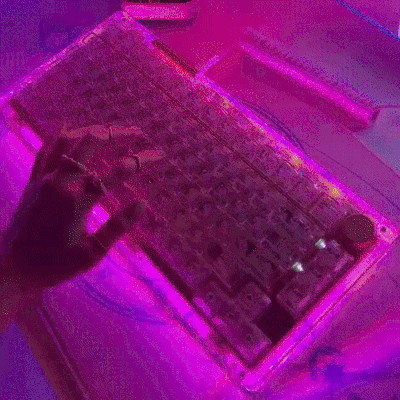



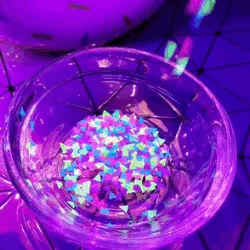
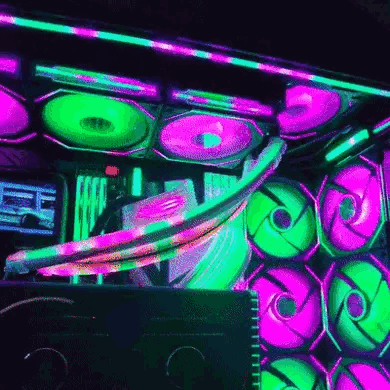


[ ♪ ] Tokyo / Leat’eq
#tim’s stims#( @ ) weatherglow#( : ) requested#stim#stimboard#regretevator#regretevator prototype#neon#green#pink#blue#yellow#computers#technology#tech#tw eyestrain#cw eyestrain#eyestrain
46 notes
·
View notes
Text
AI Tool Reproduces Ancient Cuneiform Characters with High Accuracy

ProtoSnap, developed by Cornell and Tel Aviv universities, aligns prototype signs to photographed clay tablets to decode thousands of years of Mesopotamian writing.
Cornell University researchers report that scholars can now use artificial intelligence to “identify and copy over cuneiform characters from photos of tablets,” greatly easing the reading of these intricate scripts.
The new method, called ProtoSnap, effectively “snaps” a skeletal template of a cuneiform sign onto the image of a tablet, aligning the prototype to the strokes actually impressed in the clay.
By fitting each character’s prototype to its real-world variation, the system can produce an accurate copy of any sign and even reproduce entire tablets.
"Cuneiform, like Egyptian hieroglyphs, is one of the oldest known writing systems and contains over 1,000 unique symbols.
Its characters change shape dramatically across different eras, cultures and even individual scribes so that even the same character… looks different across time,” Cornell computer scientist Hadar Averbuch-Elor explains.
This extreme variability has long made automated reading of cuneiform a very challenging problem.
The ProtoSnap technique addresses this by using a generative AI model known as a diffusion model.
It compares each pixel of a photographed tablet character to a reference prototype sign, calculating deep-feature similarities.
Once the correspondences are found, the AI aligns the prototype skeleton to the tablet’s marking and “snaps” it into place so that the template matches the actual strokes.
In effect, the system corrects for differences in writing style or tablet wear by deforming the ideal prototype to fit the real inscription.
Crucially, the corrected (or “snapped”) character images can then train other AI tools.
The researchers used these aligned signs to train optical-character-recognition models that turn tablet photos into machine-readable text.
They found the models trained on ProtoSnap data performed much better than previous approaches at recognizing cuneiform signs, especially the rare ones or those with highly varied forms.
In practical terms, this means the AI can read and copy symbols that earlier methods often missed.
This advance could save scholars enormous amounts of time.
Traditionally, experts painstakingly hand-copy each cuneiform sign on a tablet.
The AI method can automate that process, freeing specialists to focus on interpretation.
It also enables large-scale comparisons of handwriting across time and place, something too laborious to do by hand.
As Tel Aviv University archaeologist Yoram Cohen says, the goal is to “increase the ancient sources available to us by tenfold,” allowing big-data analysis of how ancient societies lived – from their religion and economy to their laws and social life.
The research was led by Hadar Averbuch-Elor of Cornell Tech and carried out jointly with colleagues at Tel Aviv University.
Graduate student Rachel Mikulinsky, a co-first author, will present the work – titled “ProtoSnap: Prototype Alignment for Cuneiform Signs” – at the International Conference on Learning Representations (ICLR) in April.
In all, roughly 500,000 cuneiform tablets are stored in museums worldwide, but only a small fraction have ever been translated and published.
By giving AI a way to automatically interpret the vast trove of tablet images, the ProtoSnap method could unlock centuries of untapped knowledge about the ancient world.
#protosnap#artificial intelligence#a.i#cuneiform#Egyptian hieroglyphs#prototype#symbols#writing systems#diffusion model#optical-character-recognition#machine-readable text#Cornell Tech#Tel Aviv University#International Conference on Learning Representations (ICLR)#cuneiform tablets#ancient world#ancient civilizations#technology#science#clay tablet#Mesopotamian writing
5 notes
·
View notes
Text

1970 Monteverdi Hai 450 SS prototype.
Designer: Trevor Fiore
81 notes
·
View notes
Text

Unleash the full potential of your business. Our expertise in product development drives your vision to success.
👉🌐 https://www.pranathiss.com 👉📧 [email protected] 👉📲 +1 732 333 3037
#productdevelopment#productdesign#innovation#design#industrialdesign#productmanagement#product#prototype#softwaredevelopment#automation#technology#business#machinelearning#AI#futureofwork#digitaltransformation
12 notes
·
View notes
Text
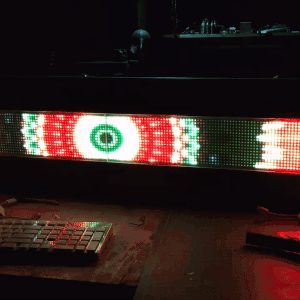
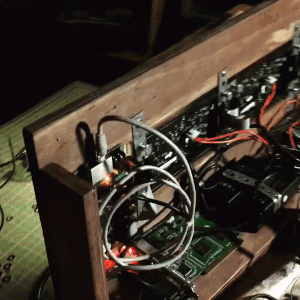
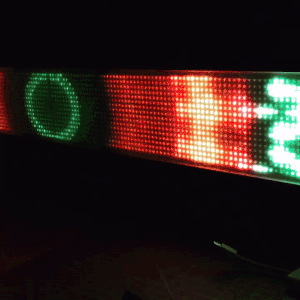
tomsepe on ig | source
#talos gifs#stim gifs#stim#tech stim#technology#techcore#hands free#wires#screens#leds#glow stim#glow#glowcore#mandala#geometric#prototype#black#brown#gray#red#green#teal#yellow#purple#tinkercore#gif ids#id in alt
52 notes
·
View notes
Text
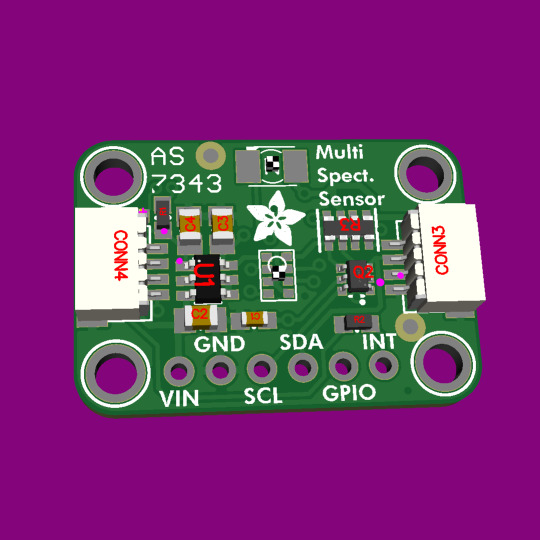
AS7343 - new proto for 14-channel spectral sensor 🌈🔬🔧
The AS7343 (https://ams-osram.com/products/sensors/ambient-light-color-spectral-proximity-sensors/ams-as7343-spectral-sensor) is a lot like the AS7341 (https://www.adafruit.com/product/4698), but instead of 10 channels, there are 14! 12 are for light wavelengths, 1 is for 'clear' (human visible), and 1 is for flicker detection. Thankfully, the '43 has the same footprint and pinout as the '41, so this was an easy prototype PCB to spin; we just changed the silkscreen. Coming soon.
#adafruit#AS7343#14channel#sensor#spectral#prototype#electronics#technology#innovation#hardware#engineering#lightsensor#coloranalysis#techupdate#diyelectronics#circuitdesign
9 notes
·
View notes
Text






Pioneer 25 Prototype, 2024. A new Extreme H race car powered by a hydrogen fuel cell with a peak output of 400kW (550bhp). The Symbio fuel cell is has been engineered specifically to meet the demands of motor racing, Extreme H represents the first-ever testbed of hydrogen technology in motorsport. Each car in Extreme H features a standardised package of parts from Spark Racing Technology, while allowing teams the flexibility to customise areas such as the front and rear bodywork sections and lights.
#Pioneer 25#Extreme H#prototype#race car#Hydrogen Fuel Cell#2025#new cars#experimental car#test vehicle#electric race car#hydrogen#Spark Racing Technology
206 notes
·
View notes
Text


EMPOWERMENT TECHNOLOGY PROJECT
— Phone Paper Prototype —
Content: Prototype Bookreader App called "Fablebound" 📖✨
Pair:
Jullianne Rubio 🩷 & @jheanicolemedillo 🖤
Submitted to:
Ma'am Jysrell Joy Colita
2 notes
·
View notes
Text
Custom 3D Printed Pump Model for Client Project | Maadhu Creatives
We’ve created a high-quality, custom 3D printed pump model tailored to our client's needs. Watch the video to see the details and craftsmanship! For more information or to start your project, contact us or visit our website!
Connect with Us: 📞 Contact Number: +919664883746 📧 Email: [email protected] 🌐 Website: maadhucreatives.com
Also, watch this: https://youtu.be/Gb1XIZ0CHiI https://youtu.be/aQJtlKi8KJ4 https://youtu.be/56y5n42mvYw
#3dprinting#innovation#design#technology#engineering#creativity#3dmodeling#makersgonnamake#prototype#futuretech#maadhucreatives
2 notes
·
View notes
Text
Did I post my previous wip like 3 hours ago? Yes! Did I also make a lot of progress and want to post this again? Yep!


One map with and without labels! Behold, Mighty TrrNak'an
#my art#not technically fantasy but#fantasy map#technically sci fi?#it's a nation with vaguely 14th/15th era technology but it takes place in the year 2300#i say vaguely because they're aliens. like a whole ass other species that exist parallel to humans in the Milky Way Galaxy#so far I have made 2 alien species. one is more technologically advanced than humans and this one is less so#and might have a third species being thought up that's about modern day human technology? that's still a prototype though
3 notes
·
View notes